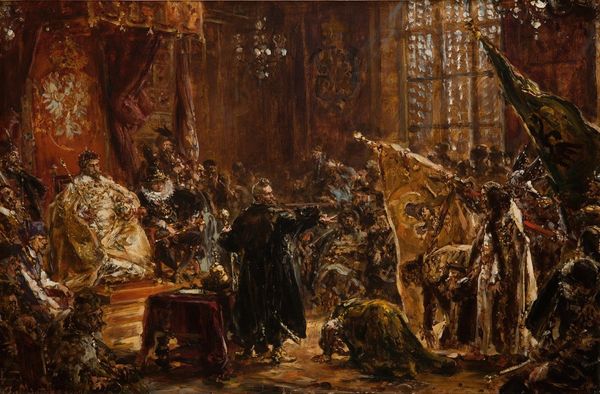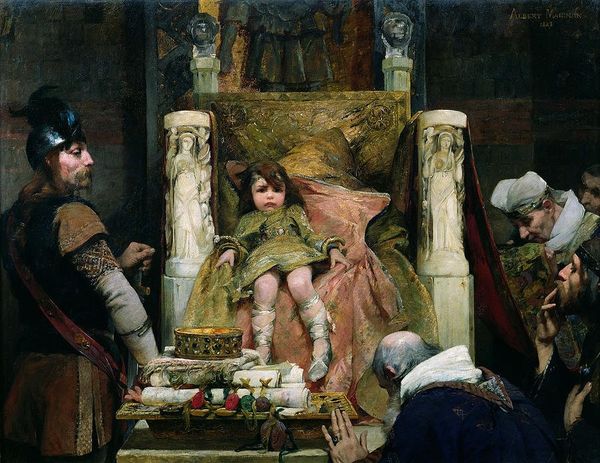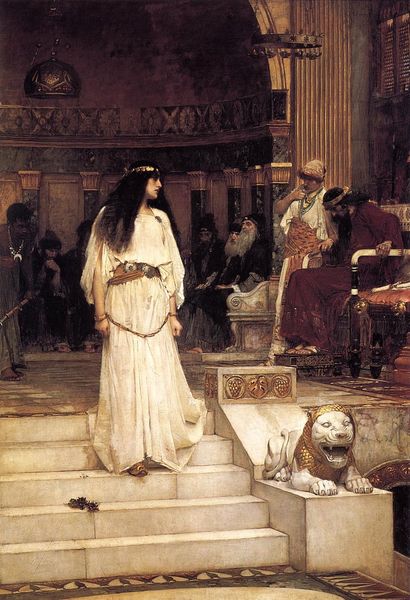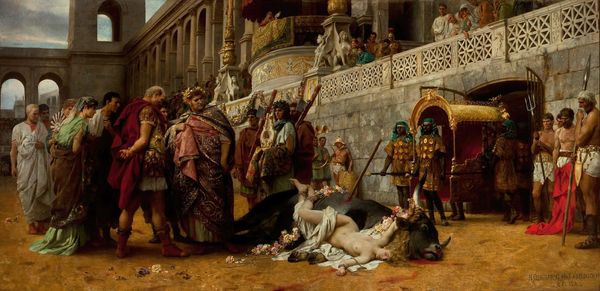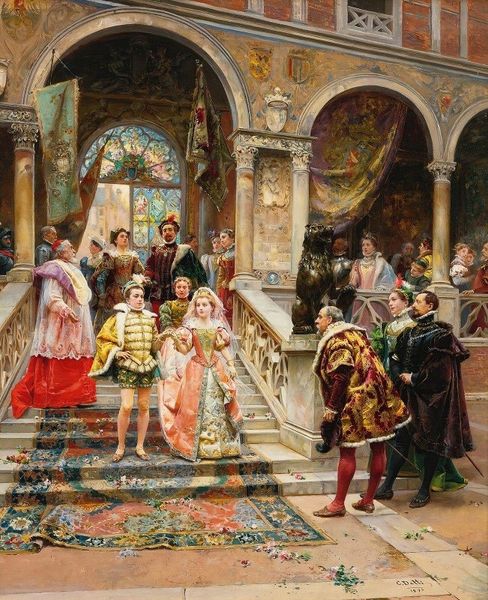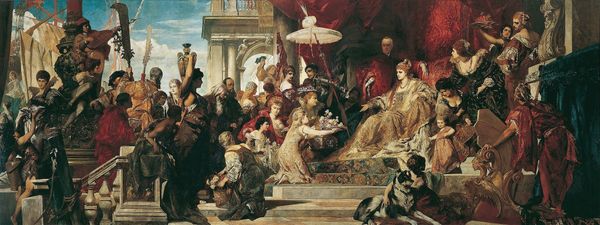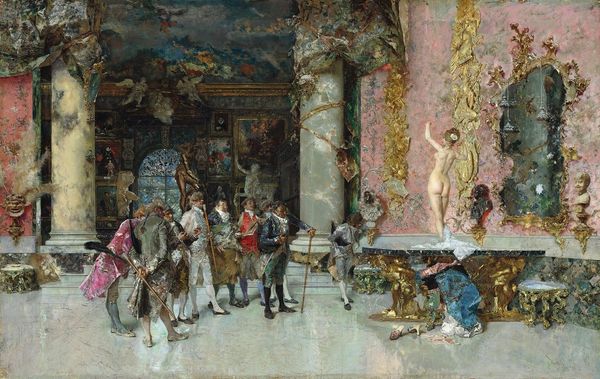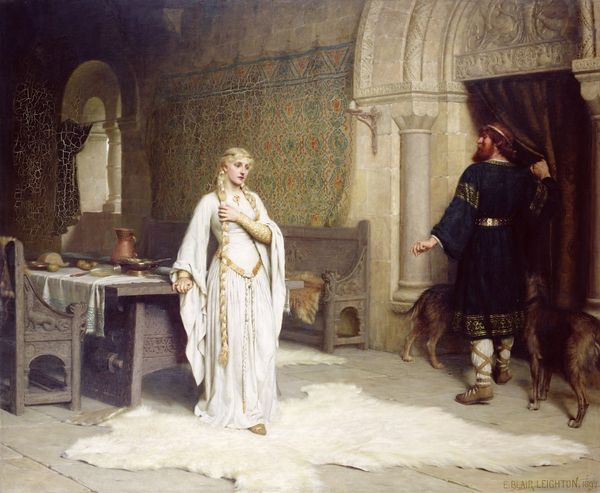
painting, oil-paint
#
figurative
#
allegory
#
painting
#
oil-paint
#
figuration
#
oil painting
#
romanticism
#
orientalism
#
genre-painting
#
nude
#
erotic-art
Copyright: Public Domain: Artvee
Rudolf Ernst painted "Salomé and the Tigers" in the late 19th or early 20th century, employing oil on canvas to depict a biblical figure in an Orientalist setting. The painting exemplifies the exoticized visions of the East prevalent in European art of that time. Ernst, an Austrian artist, never actually visited the Middle East; his Orientalist scenes were based on photographs and secondhand accounts. Here, Salomé, typically a figure from the New Testament, is recast with signifiers of what Western Europeans imagined as ‘Eastern’ opulence and power, a fantasy world of harems and potentates. The tigers at her feet symbolize untamed exoticism and royal power but they also reflect the subjugation of nature to social hierarchy. The throne visible at the back alludes to Herod’s court, however it is imagined through the lens of Western imperialism. Understanding this work requires delving into travelogues, popular literature, and visual culture of the period. By doing so, we can explore how Western artists engaged with, and often distorted, non-Western cultures.
Comments
No comments
Be the first to comment and join the conversation on the ultimate creative platform.

